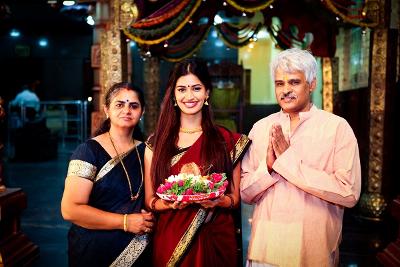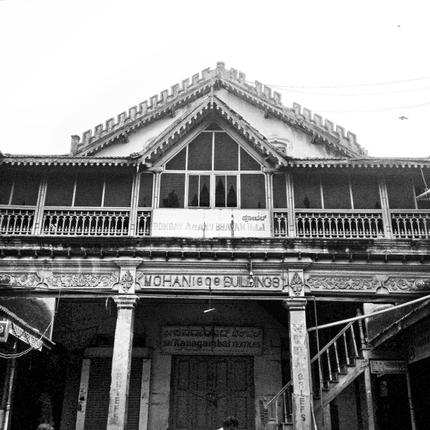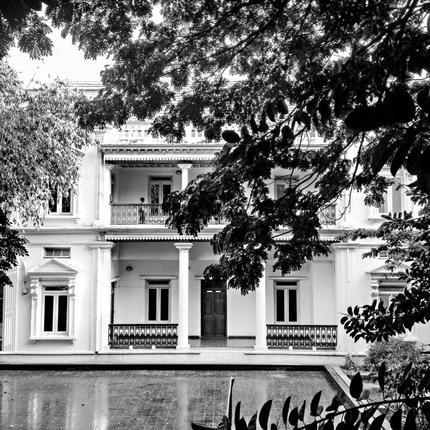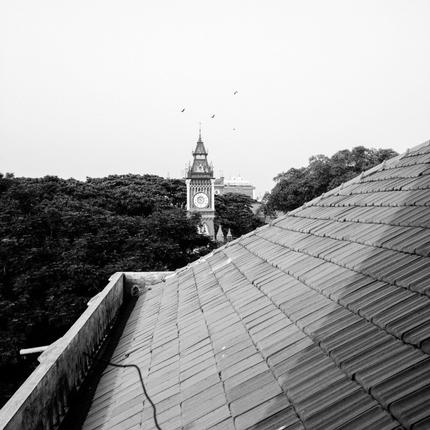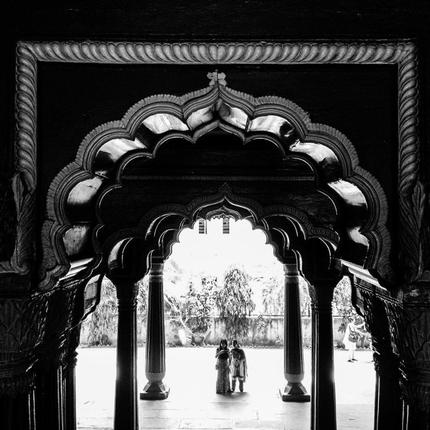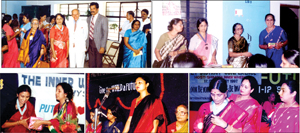A pictorial capsule ‘Chitra Samputa’

Adi Jagadguru Sri Shivarathreeshwara Shivayogi (JSS)established the Suttur Mutt in deference to the wishes of an emperor of Chola dynasty about 1,000 years ago, according to the apocryphal records of history.
Since then (950 AD) till now there have been 24 Jagadgurus for the Suttur Mutt, located 24 kms from Mysuru city by the side of the quiet flowing Kapila river.
The present Pontiff is Jagadguru Sri Shivarathreeshwara Deshikendra Swamiji, who at age 30, after succeeding Dr. Sri Rajendra Swamiji, who passed away in 1986, has taken the educational service, cultural and social activities of the Mutt to such dizzy heights that today Suttur Mutt has established under the umbrella of a common name JSS Mahavidyapeetha more than 300 different educational, social and cultural institutions. It is thus serving the society at large at a time the government is unable to fulfil its obligations. In a sense, JSS Mutt is effectively supplementing the government’s efforts in helping the poor and the needy. In the absence of royal patronage that was available during the days of the Maharajas in Mysuru for promoting art and culture the JSS Mutt is playing that role also to some extent.
The JSS Mahavidyapeetha had decided to publish four commemorative books on the occasion of its Golden Jubilee Year in 2004 and one among them was a Coffee – Table book aptly called ‘Chitra Samputa,’ a pictorial book of 301 pages that reflected the history of Suttur Mutt and also the JSS Mahavidyapeetha. By any imagination this is a daunting and time-consuming task for anyone but to imagine that it has taken inexplicably 11 years, despite the resources available, makes one wonder why.
My guess is getting old pictures, some from the archives, some from different sources must have taken time. But after going through the book, I felt the wait and the delay have not gone in vain. The quality and selection of pictures tell it all — the history of the JSS Mutt and its institutions are well and effectively put between the covers of this 301-page book with high production value. Kudos to its editor S.M. Jambukeshwar, who is a talented professional photographer, who retired after serving the JSS Mutt for many years.
The JSS Mutt could not have chosen a more deserving and qualified person for this responsibility for the simple reason that Jambukeshwar, as I know him for the last over 35 years, is a serious and committed person when it comes to discharging his given responsibility or in whatever he does. In our early days, he would willingly give Star of Mysore and Mysooru Mithra news-photographs not only that related to the Mutt and the JSS educational and cultural activities but also of wildlife and other news pictures he had taken. A task master, he would never accept the second best. These personal and professional qualities of Jambukeshwar are seen on each page of the book and in each photograph thus enhancing the book’s value and in achieving the goal for which the book is published.
While I was perusing this book in my office, a friend barged in on some errand and was curious. Our conversation went at a tangent to the complex character of Hindu religion, the way it evolved over four thousand years in the Indian Sub-Continent and beyond leaving remnants of temples, idols and religious practices among the people from the early Vedic period.
Of the primordial divine Trinity of Brahma, Vishnu and Maheshwara, each with a responsibility of creating, preserving and destroying repeating itself to infinity, only Vishnu and Shiva are dominant in Hindu religion — Vaishnavites and Shaivites.
Jss Mutt follows Shiva traditions going back to 10th century, as I mentioned earlier.
In Karnataka, Lord Basavanna gave Shaivism a new thrust in the 12th century, whose followers are known as Lingayats.
Be that as it may, my friend tells me that there are five Veerashaiva Mutts in India known as ‘Pancha Peeta,’ each headed by a Jagadguru. They are Kedar, Kashi, Sreeshaila (in Andhra), Ujjain and Balehonnur (in Karnataka).
For me the idea of Shiva is that of Pashupathinatha originating from the Mohenjodaro and Harappan civilisation (now in Pakistan).
Vishnu is seen in the avatar of Rama and Krishna appearing in the epic Ramayana and Mahabharata as also Bhagavatam respectively.
As for Shiva, we have Shiva Purana mythology.
The Hindu pantheon is said to have 33 crore Gods and Goddesses — flight of imagination — and it is a religion of celebration that provides inspiration to artists — actors, painters, writers, dancers, sculptors, musicians and who are in the creative world — to express themselves in each one’s medium as an offering to the divine.
For Hindus God could be formless but in worship and celebration they find God in the form of an idol or a picture or a carving. For the lay person sans any creative talent, there is Bhakti Marga, simply pray all by oneself, not in the congregation as in other religions. That is the uniqueness of Hinduism. Let it be.
Now to revert to the book, here are some of the photographs I think will interest our readers. The book is clearly divided into different sections beginning with the first one titled ‘History’ giving a brief history of the Mutt. There are 12 sections, the last one being on ‘Buildings.’
Present Pontiff Sri Shivarathri Deshikendra Swamiji will be 60 years come August 20, 2016. It is learnt, Sri Shivarathri Deshikendra Swamiji has discontinued the tradition of annually sitting on the throne and also of being carried in a palanquin. Well, when kingdoms have fallen and thrones are destroyed, why continue the incongruous tradition created by the sycophants? Saints should indeed lead a frugal, simple, austere life, not succumb to the pomp and pageantry of thrones and palanquins that should belong only to kings. Sri Shivarathri Deshikendra Swamiji has indeed set a very good example to those Swamijis who are still trapped in this show of temporal power in place of spiritual power.
And finally, if one wants to see VIP politicians since independence, this book will help. However, I found VVIPs like Gandhiji, Nehru, Vallabhbhai Patel, C. Rajagopalachari and Mrs. Indira Gandhi missing…
The book at Rs. 1,500 is worth as a Coffee-Table book and as an addition to the library.
e-mail: kbg@starofmysore.com
source: http://www.starofmysore.com / Star of Mysore / Home> Abracadabra….Abracadabra / by K.B.Ganapathy / April 22nd, 2016
![Pandit Sudhakar Chaturvedi [Pic. courtesy : Taranga]](http://www.bangalorefirst.in/wp-content/uploads/2016/04/PanditSudhakarBF23apr2016.jpg)

